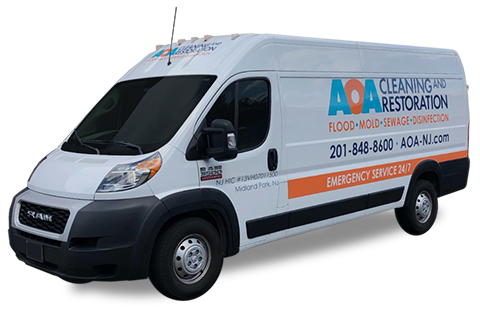Water damage can wreak havoc on your home, causing significant destruction and losses. When water infiltrates your property, various items and areas can be ruined, resulting in costly repairs and replacements. In this section, we will explore the aftermath of water damage and discuss what items and areas are typically affected by water exposure.
Key Takeaways:
- Water damage can lead to extensive damage to structural elements such as walls, floors, ceilings, and foundations.
- Electrical systems and appliances are at risk of being ruined due to water exposure, rendering them unsafe or inoperable.
- Furniture and upholstery can suffer from mold growth, discoloration, warping, and decay as a result of water damage.
- Personal belongings such as clothing, books, photographs, and sentimental items can be destroyed by water infiltration.
- Mold growth is a common consequence of water damage, posing health risks and causing additional issues if left untreated.
Effects of Water Damage on Structural Elements
When water infiltrates your home, it can wreak havoc on the structural integrity of the building. The effects of water damage on structural elements, including walls, floors, ceilings, and foundations, can be severe and costly to repair.
Let’s take a closer look at how water can ruin each of these essential components:
- Walls: Excessive water exposure can cause walls to become weakened, leading to cracks, peeling paint, and even structural instability. Mold and mildew growth may also occur, further compromising their integrity.
- Floors: Water can seep into various types of flooring, such as hardwood, laminate, or carpet, causing warping, discoloration, and mold growth. In severe cases, the flooring may need to be completely replaced.
- Ceilings: Leaks or flooding from above can result in water damage to ceilings. This can lead to sagging, discoloration, and the formation of mold or mildew, jeopardizing the safety and aesthetics of your home.
- Foundations: Continuous exposure to water can compromise the foundation of your home, leading to cracks, shifting, and eventual structural instability. This not only affects the overall stability of the building but also poses significant safety risks.
Water damage to these structural elements requires immediate attention and professional assessment to prevent further deterioration and potential hazards.
| Structural Element | Effects of Water Damage |
|---|---|
| Walls | Cracks, peeling paint, mold growth |
| Floors | Warping, discoloration, mold growth |
| Ceilings | Sagging, discoloration, mold or mildew formation |
| Foundations | Cracks, shifting, structural instability |
As you can see from the table above, the effects of water damage on structural elements can be extensive and require prompt action to mitigate further harm to your home.
Damaged Electrical Systems and Appliances
Water damage can have catastrophic effects on electrical systems and appliances in your home. When water comes into contact with these components, it can cause severe damage that compromises their functionality and safety. In this section, we will explore the potential risks and consequences of water damage to your electrical systems and appliances, as well as provide insights on how to mitigate the damage and ensure the safety of your home.
The Impact on Electrical Systems
Water can infiltrate your home’s electrical wiring, outlets, and circuit breakers, leading to a wide range of electrical problems. Even a small amount of moisture can corrode the electrical connections, resulting in shorts, power surges, or complete system failure.
Furthermore, water in contact with electrical wires can pose a significant safety hazard, increasing the risk of electrical shocks and fires. It is crucial to prioritize the inspection and repair of water-damaged electrical systems to avoid potential accidents or further damage.
The Effect on Appliances
Water damage can also ruin your appliances, rendering them inoperable and potentially dangerous. When water seeps into appliances, it can damage their internal components, including motors, control panels, and wiring.
Appliances such as refrigerators, washing machines, dishwashers, and televisions are particularly susceptible to water damage. Not only can this disrupt your daily routines, but it can also result in costly repairs or replacements.
Mitigating the Damage
When dealing with water damage to electrical systems and appliances, it is essential to prioritize safety and take immediate action. Here are some steps you can take to mitigate the damage:
- Ensure your safety by turning off the main power supply to your home before inspecting any water-damaged electrical systems or appliances.
- Consult a professional electrician to evaluate the extent of the damage and perform any necessary repairs or replacements.
- If your appliances have been exposed to water, avoid using them until they have been inspected and deemed safe by a qualified technician.
- Consider investing in water-detection devices or systems that can help alert you to potential water leaks or damage early on.
- Regularly inspect your electrical systems and appliances for any signs of water damage or deterioration, and address any issues promptly.
By taking these proactive measures, you can minimize the impact of water damage on your electrical systems and appliances, ensuring the safety of your home and avoiding costly repairs or replacements.
Ruined Furniture and Upholstery
When water damage occurs in your home, one of the areas that can be severely impacted is your furniture and upholstery. Water exposure can lead to a range of issues such as mold growth, discoloration, warping, and decay.
Water has a tendency to seep into the fibers of furniture and upholstery, causing irreversible damage. The moisture creates the perfect environment for mold to thrive, posing not just a cosmetic problem but also potential health risks.
Discoloration is another common consequence of water damage. When water comes into contact with upholstery, it can cause fabrics to lose their original color, resulting in unsightly stains and blemishes.
Warping and decay may also occur when water infiltrates furniture made of wood or other porous materials. The moisture can cause these materials to swell, warp, or rot, compromising their structural integrity.
To mitigate the damage caused by water to your furniture and upholstery, it is crucial to take immediate action. Here are some steps you can follow:
- Remove the affected furniture and upholstery from the water-damaged area to prevent further absorption of moisture.
- Place the items in a well-ventilated area to allow them to dry naturally. Avoid direct exposure to sunlight, as it can fade colors.
- If mold growth is present, use a solution of water and mild detergent to gently clean the affected areas. Ensure proper ventilation during the cleaning process.
- Consider consulting a professional furniture restorer or upholstery cleaner for more severe cases of water damage.
By taking prompt action and following these steps, you can increase the chances of salvaging your water-damaged furniture and upholstery. However, it’s important to note that some items may be beyond repair and replacement may be necessary.
| Effects of Water Damage on Furniture and Upholstery | Actions to Mitigate the Damage |
|---|---|
| Mold growth | Remove furniture from the affected area and clean with a mild detergent solution |
| Discoloration | Allow items to dry naturally in a well-ventilated area |
| Warping and decay | Consult a professional furniture restorer for more severe damage |
Destroyed Personal Belongings
Water damage can be devastating to your personal belongings, causing irreparable destruction to items that hold both practical and sentimental value. From clothing to books, photographs to sentimental treasures, the effects of water can be widespread and devastating.
Clothing: When water infiltrates your home, clothing is among the most vulnerable items. Fabrics can easily absorb water and become damaged beyond repair. In addition to the physical damage, the potential for mold growth on damp clothing poses health risks and further ruins your garments.
Books and Documents: Books and important documents can also fall victim to water damage. The pages can become soggy and disintegrate, rendering them unreadable. The ink on printed materials may run or smear, making them illegible. Valuable books and cherished documents, such as family records or heirlooms, can be lost forever.
Photographs: Water damage is particularly heartbreaking when it affects your cherished photographs. The delicate nature of photos makes them highly susceptible to water, causing fading, warping, and in severe cases, complete destruction. Memories captured in these photographs can be lost forever, leaving you with only the memories in your mind.
Sentimental Items: Water damage can also impact sentimental items with significant emotional value, such as heirlooms, childhood keepsakes, or mementos from special occasions. These items may hold immense sentimental significance, making their destruction even more devastating.
Salvaging what you can of your personal belongings after water damage is crucial. Quick action is essential to minimize the damage and prevent further deterioration. By following proper restoration techniques, such as drying, cleaning, and professional assistance when necessary, you may be able to salvage some items with sentimental or financial value. However, it’s important to recognize that not all items may be salvageable, and it’s crucial to prioritize your safety and well-being during the recovery process.
| Belongings | Effects of Water Damage |
|---|---|
| Clothing | Saturation, discoloration, mold growth |
| Books and Documents | Soggy pages, disintegration, ink smearing |
| Photographs | Fading, warping, destruction |
| Sentimental Items | Damage to heirlooms, keepsakes, mementos |
Mold Growth and Associated Issues
One of the significant repercussions of water damage is the growth of mold. When excess water or moisture is present in your home, it creates an ideal environment for mold spores to thrive. Mold can start growing within 24-48 hours after water damage occurs, posing serious risks to both your property and health.
Mold growth not only causes structural damage but also leads to a range of health problems. Exposure to mold can trigger allergies, respiratory issues, and even worsen existing conditions such as asthma. The presence of mold can also release volatile organic compounds (VOCs), which can have harmful effects on indoor air quality.
If left untreated, mold can spread to different areas of your home, leading to more significant damage. It can infiltrate walls, ceilings, and flooring materials, compromising their integrity and requiring extensive repairs. Additionally, mold growth can cause discoloration, unpleasant odors, and deterioration of furniture, fabrics, and other belongings.
It’s essential to address mold growth promptly to prevent further damage and protect your health. If you suspect mold in your home following water damage, it’s recommended to consult a professional mold remediation specialist. They have the expertise and equipment to locate and safely remove mold, as well as implement measures to prevent future growth.
| Associated Problems | Effects |
|---|---|
| 1. Structural Damage | Mold can weaken and deteriorate structural materials, leading to costly repairs. |
| 2. Health Risks | Mold exposure can cause allergies, respiratory problems, and worsen existing health conditions. |
| 3. Odors and Discoloration | Mold growth can result in unpleasant smells and unsightly stains on surfaces. |
| 4. Property Damage | Mold can damage furniture, fabrics, and personal belongings, requiring replacements. |
| 5. Decreased Indoor Air Quality | Mold releases harmful volatile organic compounds (VOCs) that can impact air quality. |
Addressing mold growth promptly is crucial to mitigate the associated problems and prevent further damage. Regularly inspecting your home for signs of water damage and taking immediate action after incidents can reduce the risk of mold growth and protect your property and well-being.
Conclusion
In conclusion, water damage can result in significant losses and damage to various aspects of your home and belongings. When a water-related disaster strikes, it’s crucial to understand what can be ruined and take immediate action to mitigate further harm.
Structural elements such as walls, floors, ceilings, and foundations are vulnerable to water damage and can weaken over time if not addressed promptly. Electrical systems and appliances are also at risk, with water infiltrating wiring, outlets, and rendering them unsafe or inoperable.
Furniture and upholstery can be ruined by water exposure, leading to mold growth, rotting, and loss of functionality. Personal belongings, including clothing, books, and sentimental items, are particularly susceptible to destruction after being soaked in water.
Furthermore, water damage creates the perfect environment for mold growth, which can have detrimental effects on both your property and your health. It is crucial to address mold issues promptly to prevent further damage and avoid potential health risks.
By understanding the potential consequences of water damage and taking proactive steps to safeguard your valuables, you can minimize the long-term impact on your property. Remember, time is of the essence when dealing with water damage, and swift action can make a significant difference in preserving what matters most to you.
FAQ
What items and areas are typically ruined after water damage?
The aftermath of water damage can result in the ruin of various items and areas in your home. Commonly affected items include furniture, appliances, personal belongings, and upholstery. Areas such as walls, floors, ceilings, and foundations can also sustain significant damage.
How does water damage affect structural elements?
Water damage can have severe effects on the structural integrity of your home. Walls, floors, ceilings, and foundations can become weakened, warped, or even collapse due to prolonged exposure to water. It is crucial to address water damage promptly to prevent further structural issues.
What kind of damage can water cause to electrical systems and appliances?
Water can wreak havoc on electrical systems and appliances. It can cause short circuits, damage wiring, and render outlets unsafe or inoperable. Appliances can also be ruined, leading to potential fire hazards or complete malfunction. It is essential to have a professional assess and repair any water damage to electrical systems and appliances.
How does water damage impact furniture and upholstery?
Water damage can ruin furniture and upholstery in various ways. It can lead to mold growth, discoloration, warping, and decay. If not properly addressed, the damage can be irreversible. It is crucial to take immediate action and consult professionals specialized in water damage restoration to salvage your furniture and upholstery.
What personal belongings are typically destroyed by water damage?
Water damage can result in the destruction of personal belongings such as clothing, books, photographs, and sentimental items. These items are often difficult to restore fully. However, there are techniques and services available that can help mitigate the damage and salvage what is possible.
What are the associated issues with mold growth after water damage?
Mold growth is one of the significant repercussions of water damage. It poses health risks, including allergies, respiratory problems, and even infections. In addition to health issues, mold can cause further damage to structures and belongings, leading to additional repair and restoration costs. Prompt mold remediation is crucial to prevent its spread and minimize the associated issues.




















